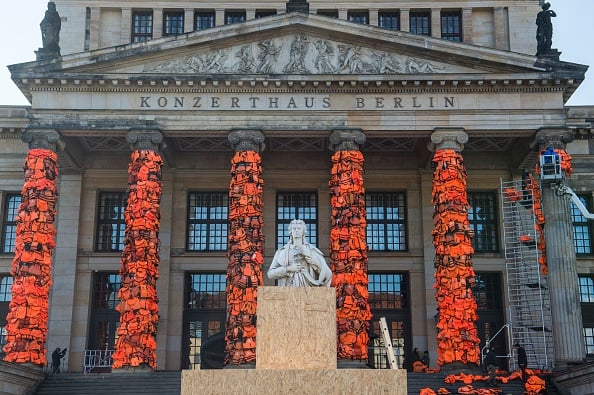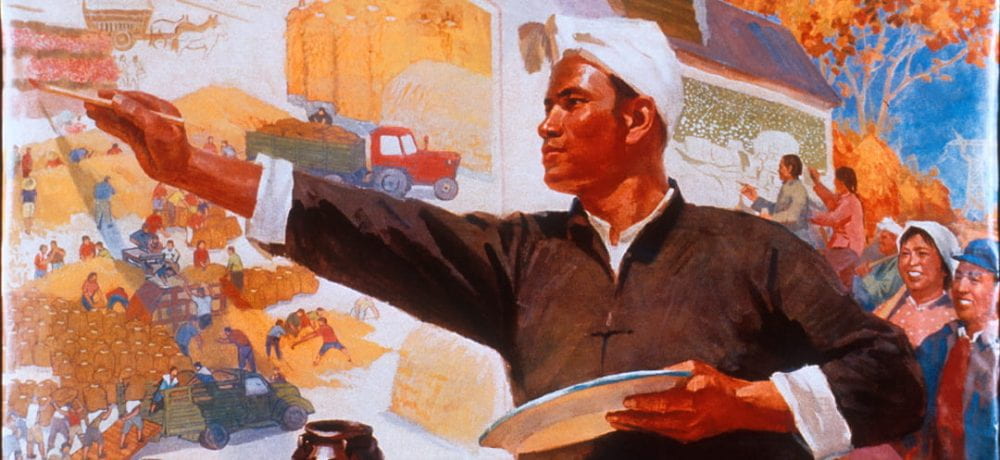
Ai Weiwei, Instillation, Life-jackets, Konzerthaus Berlin 2016
This instillation comes in the wake of several pieces of art from Ai Weiwei with the focus on refugees in Europe. The first major piece Ai Weiwei constructed on refugees was a recreation of the famous photo of a drowned Syrian refugee child washed up on the shores of Greece. This photo drew world wide attention to struggles Syrian refugees where enduring in the hopes of getting their families somewhere safe. Ai Weiwei connected to the struggle the refugees where experiencing as he also had to leave his home country of china as it was not safe for him any longer. This put him in a unique situation where his voice on the crisis had a very strong impact. Shortly after his photo recreation Ai Weiwei chose to cancel an instillation he had planned in Copenhagen after hearing of a law passed in Denmark that allowed authorities to seize valuable assets of asylum seekers and withhold them from their families. All of this occurred in 2015 subsequently in 2016 Ai Weiwei created his instillation which features the Pillars of the Konzerthaus Berlin in Germany fully wrapped in life jacket. This instillation was put up during the same time the Berlin film festival was occurring. Some believe that the instillation which clearly is in reference to the ongoing Syrian refugee situation was not well thought out (Neuendorf, 2016), as it was installed in a Germany who had accepted the most refugees out of any country in the European union. However in typical Ai Weiwei fashion, he lets the work speak for itself and chooses to have very little commentary about it. While some think that it is wrong to have put this instillation in Germany, the art instantly drew great media attention and brought the focus back to the refugee crisis which is most likely what Ai Weiwei intended.
Bibliography
Tan, Monica. “Ai Weiwei Poses as Drowned Syrian Infant Refugee in ‘Haunting’ Photo.” The Guardian, Guardian News and Media, 1 Feb. 2016, www.theguardian.com/artanddesign/2016/feb/01/ai-weiwei-poses-as-drowned-syrian-infant-refugee-in-haunting-photo.
Neuendorf, Henri. “Ai Weiwei Showcases 14,000 Refugee Life Jackets in Berlin.” Artnet News, 15 Feb. 2016, news.artnet.com/art-world/ai-weiwei-life-jackets-installation-berlin-427247.


